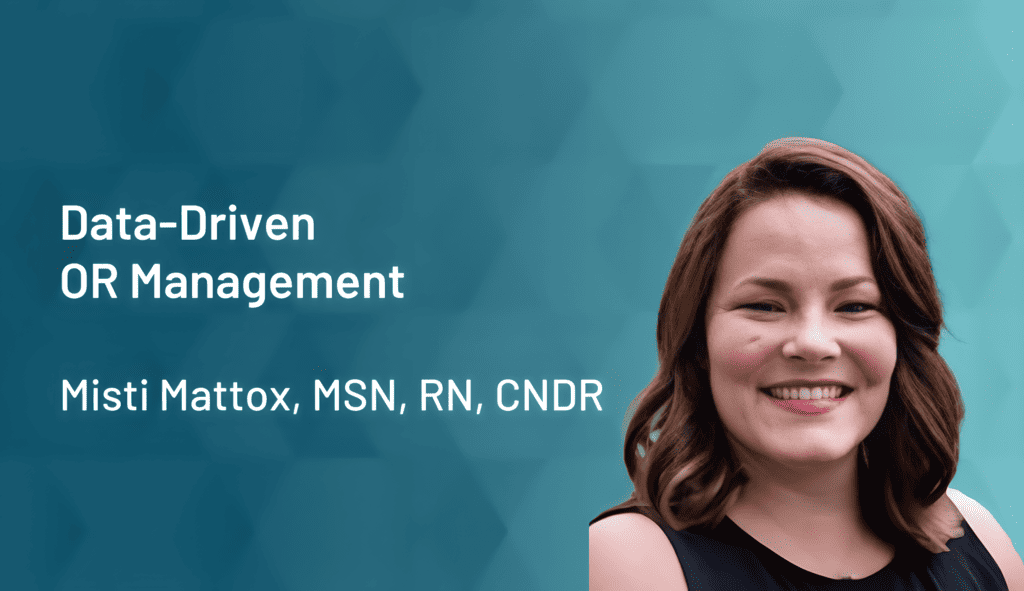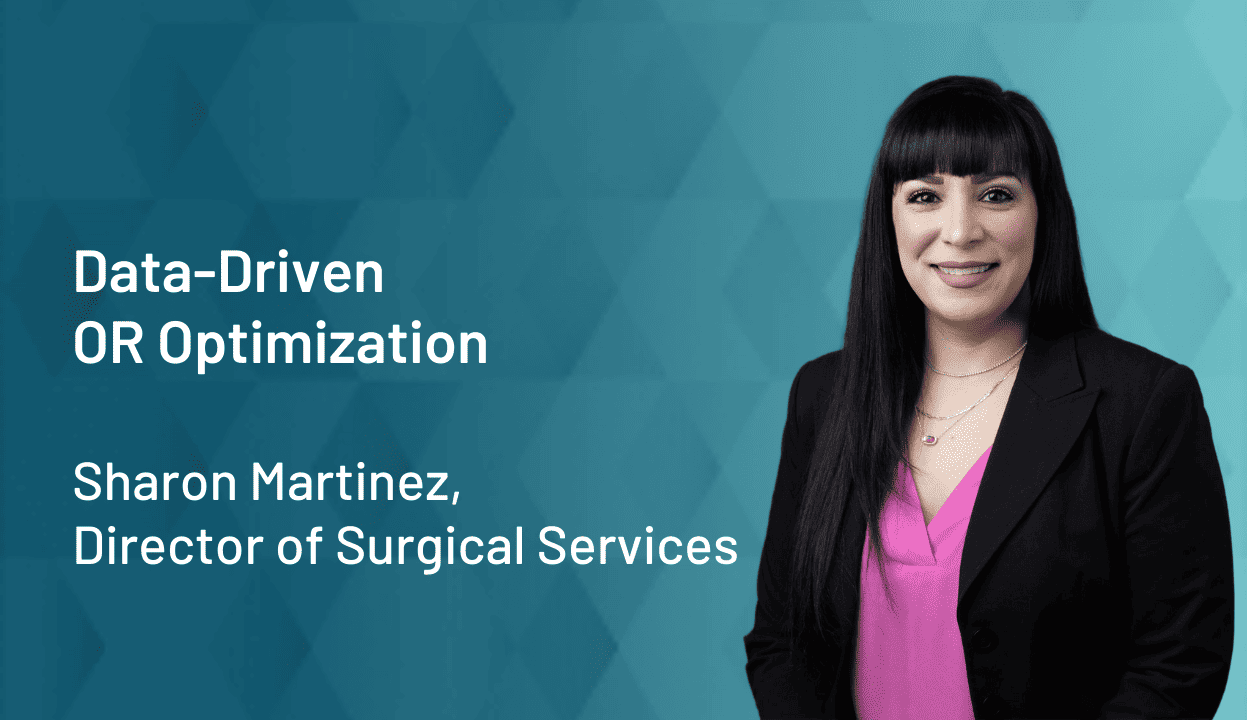
Blog
Data-Driven OR Management
Learn More

Caresyntax Blog
February 29, 2024
In the ever-evolving landscape of healthcare, the integration of data-driven practices is heralding a new era of efficiency and patient care. In this blog, we delve into a conversation with Sharon Martinez, Director of Perioperative Services at South Texas Health System. Martinez’s healthcare journey commenced in 2008 as a nurse, progressing through roles such as OR Circulator and Clinical Supervisor of Perioperative Services before assuming her current position in 2018. Since then, she has spearheaded initiatives in the optimization of Operating Room (OR) management. Join us as Martinez shares her wealth of experiences and profound insights into the transformative power of data in perioperative care.
One of the primary challenges that Sharon’s surgical care team set out to address was Turnover Time, which had increased to a concerning 38 minutes. Surgical case turnover time is essential for optimizing the efficiency, resource utilization, and overall effectiveness of surgical services. It has implications for both the financial aspects of healthcare delivery and the well-being of patients and healthcare providers. Integrating surgical data, workflow, and OR analytics tools make it easy to identify efficiency improvement opportunities in and around the OR.
Sharon and her team are also looking into improving First Case On-Time Starts and optimizing turnover. These initiatives aim to ensure that not only do patients experience minimal wait times, but surgeons are also able to operate more efficiently. By using the automated reports that were generated by Caresyntax’s surgical data platform the clinical and operational insights offered by analyzing the OR KPIs, led to implementing new processes and roles, highlighting the impact of data-driven decision-making in the healthcare setting.
Sharon’s approach involves assembling workgroups that include stakeholders from various departments, including administration, surgeons, nursing staff, and support services. Collaboration and communication among these stakeholders are key to the success of these projects.
“I think most of the time people will participate and be willing and buy in when there is benefit across the board.”
One of the key factors is securing buy-in from all involved parties. Sharon highlights the importance of explaining the project, its significance, and how it benefits each stakeholder. She emphasizes, “I think most of the time people will participate and be willing and buy in when there is benefit across the board.”
Sharon adds, “In the world of healthcare, patience and persistence are key when it comes to implementing change. With Caresyntax’s support and innovative solutions, I believe we’re well-prepared to adapt to the ever-evolving landscape of perioperative care.”
Sharon’s advice to her peers in healthcare is to start small, focusing on a single area of improvement. Implement changes in collaboration with stakeholders, continuously monitor progress, and remain patient, as data-driven transformations take time.
When working with new surgical data platforms, there may be a learning curve; however, through trainings, support, and automated reports, data utilization has become more accessible and understandable for her team.
“Over the years, we’ve seen remarkable results in our Turnover Time and block utilization, all thanks to the power of data-driven decision-making.”
Sharon reflects, “Working with Caresyntax has been an incredible journey of growth and improvement for our surgical team at South Texas Health System in McAllen. Over the years, we’ve seen remarkable results in our Turnover Time and block utilization, all thanks to the power of data-driven decision-making.”
Sharon is excited about a video pilot project with Caresyntax, leveraging the potential of AI and video data in perioperative care. “I want to make sure that while we are being as efficient as possible, which means being ready, making sure we’re not leaving the room, making it more efficient for our surgeons as well. I want to evaluate that first to see what we can do better: if it’s for staffing, if it’s for anesthesia purposes, if it’s for housekeeping between. We want to look at the entire aspect and work on that surgeon turnover to decrease it; however, percentage we decide upon, but what we can do to get there and then as well as quality review. Still being efficient or improving efficiency but making sure that the quality is still there and not cutting any kind of corners to become more efficient. So, for me, those are the two things that I want to work on congruently to make sure that those are being done correctly.”
Video data, in particular, has multiple applications, such as quality checks, efficiency improvement, and staff education. She envisions the use of video data will provide insights from an external perspective and facilitate the onboarding process for new staff.
“I personally love the video idea. I think it allows you to review from an outside perspective, and it also allows people to review who may be experts on certain roles. That way you can get a full picture of what is actually going on and be able to make those changes.”
Sharon states, “I personally love the video idea. I think it allows you to review from an outside perspective, and it also allows people to review who may be experts on certain roles. That way you can get a full picture of what is actually going on and be able to make those changes.”
In terms of the future, Sharon envisions exciting possibilities with AI and video technology. These advancements promise to provide real, tangible data that can be used to improve surgical quality and efficiency.
“I’m excited to see, as new technology continues to come out, how we can incorporate that into changing our practices for the better.”
Sharon concludes, “I think with all the new AI technology, the video, the audio, the computerized systems coming out, I think all those will be beneficial in the long run. I’m excited to see, as new technology continues to come out, how we can incorporate that into changing our practices for the better.”
Sharon’s experiences at South Texas Health System in McAllen serve as a shining example of the transformative power of data in perioperative care. With patience, persistence, and the right data-driven insights, perioperative leaders can leverage those learnings to enhance patient care and operational excellence.